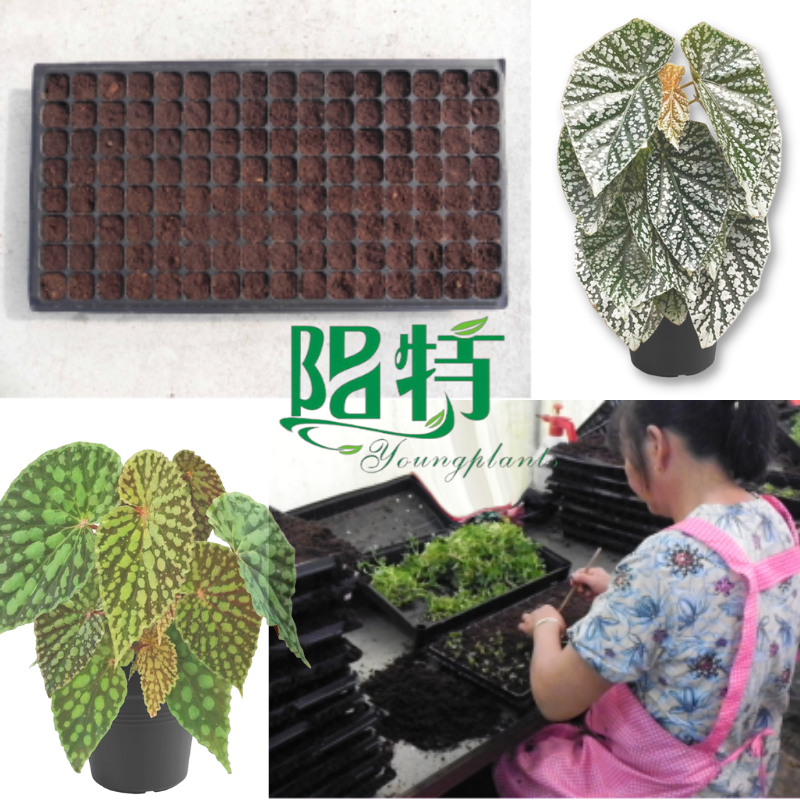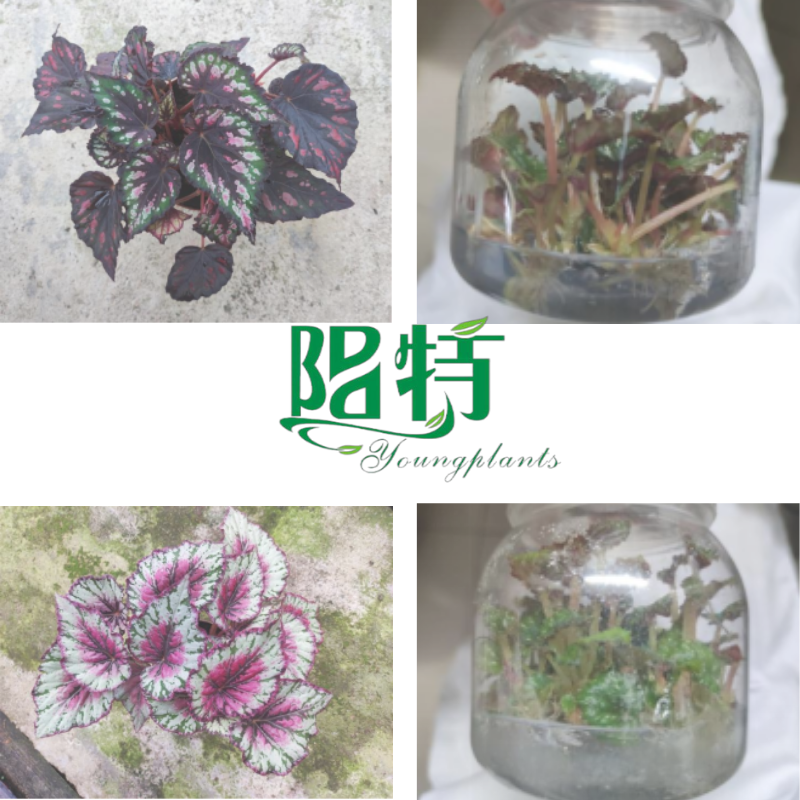The Complete Guide Of How to Propagate Begonia Plant | Foshan Youngplants
Propagating begonia plants is a great way to get more of these beautiful flowers on your farm. You can propagate them by dividing the plants or taking cuttings from new growth. Both methods are easy and can be done right in your own home.
Keep reading to learn how to propagate begonia plants yourself!
What is Propagation and Why Do It?
Propagation is simply the process of reproducing plants from a parent plant. This can be done in several ways, but the most common methods are by seed, division, or cuttings.
There are a few reasons why you might want to propagate your begonias. First, it's a great way to get more plants if you only have a few. Second, it's a way to keep your plants healthy and vigorous. And finally, it's a way to create new plants that are exact clones of the parent plant.
If you want to learn how to propagate begonia plants, read on! We'll show you how to do it using both division and cuttings.
How to Propagate Begonias by Division
One of the easiest ways to propagate begonias is by division. This is a great method to use if you already have begonias that are big and healthy. To divide a begonia, follow these steps:
1. Wait for the begonia to finish blooming. This is typically in late summer or early fall.
2. Water the plant well a few days before division so that the roots are nice and moist.
3. Carefully dig up the entire plant, being careful not to damage the roots.
4. Gently pull the plant apart into two or more sections, making sure each section has a good amount of roots.
5. Plant the divisions in well-drained soil, and water them well.
How to Propagate Begonias by Cuttings
If you don't have a begonia that's big enough to divide, or if you just want to try something different, you can propagate begonias by taking cuttings. To do this, follow these steps:
1. Choose a healthy begonia plant that has new growth. This is typically in late spring or early summer.
2. Cut a 4-6 inch piece of stem from the plant, making sure to include a few leaves.
3. Remove the bottom leaves from the cutting, and dip the cut end in the rooting hormone.
4. Plant the cutting in well-drained soil and water it well.
5. Place the pot in a warm, sunny spot, and keep the soil moist.
In 6-8 weeks, your begonia cutting should have rooted and be ready to plant in your farm!
Propagating begonias is a great way to increase your collection or create Begonia young plants for your farm. Begonias are easy to propagate and make great houseplants, so why not try them?
Which Method is Best for You?
Now that you know how to propagate begonias by both division and cuttings, you might be wondering which method is best for you.
If you have a begonia that's already big and healthy, the division is probably the best option. It's quick and easy, and you'll end up with two or more plants.
If you don't have a big enough begonia to divide or want to try something new, taking cuttings is a great option. Cuttings are easy to take and usually root quickly. Plus, you can propagate begonias from cuttings even if you don't have a big, healthy plant to start with.
No matter which method you choose, propagating begonias is a fun and easy way to get more of these beautiful plants in your farm. Give it a try today!
Some Other Methods of Propagate?
In addition to division and cuttings, there are a few other methods you can use to propagate begonias. These methods are more advanced, but they're still fun to try if you're up for a challenge!
Air Layering
Air layering is a method of propagating begonias (and other plants) that don't require any soil. To air layer a begonia, you'll need to cut a ring around the stem of the plant and insert a toothpick or piece of wire into the cut. Then, wrap the stem tightly with moist sphagnum moss, and secure it in place with a rubber band. In a few weeks, roots will start to form in the moss, and you can cut the stem below the roots and pot it up.
Grafting
Grafting is another advanced propagation method that can be used to propagate begonias. To graft a begonia, you'll need to find a healthy begonia plant with two or more stems. Then, you'll need to cut a "T" shape into the stem of the plant and carefully insert the stem of the other begonia plant into the cut. The two plants will eventually grow together and form a single plant.
Leaf Cuttings
You can also propagate begonias from leaf cuttings. To do this, you'll need to cut a leaf from the begonia plant, making sure to include a small piece of stem. Then, you'll need to insert the leaf-cutting into well-drained soil and water it well. In a few weeks, roots will start to form, and you can pot up the new plant.
No matter which method you choose, propagating begonias is a fun and easy way to get more of these beautiful plants in your farm.
Where to Get Begonia Young Plants?
Looking for begonia young plants? You can find them at many different begonia suppliers. Some of these suppliers specialize in begonias, while others carry a wide variety of plants.
You can also purchase begonia wholesale from some companies. This is a great option if you're looking to buy in bulk. When purchasing begonias, be sure to choose a reputable begonia supplier that offers healthy plants.
Once you have your begonias, you'll need to transplant them into pots or planters. Be sure to provide adequate drainage and water regularly. With proper care, your begonias will thrive and produce beautiful blooms.
YoungPlants is the Wholesale Tissue Culture Plants Manufacturers & Suppliers. As a result of our hard work and dedication, Foshan Youngplants Co., Ltd has grown into an international tissue culture biotechnology company known as 'The Rising Star in the Field'.
With seven specialized laboratories covering 11000 square meters, we are able to provide supplies for both domestic use and export markets such as America and European countries.
We gained a strong reputation with help from clients like professors who appointed us officials within their fields; this led China's government to honor them by conferring honors on themselves.
How to Grow Begonia Young Plants?
To grow begonia young plants, you'll need to provide them with well-drained soil and water regularly. Begonias do best in bright, indirect light, so be sure to place them in a spot where they'll receive plenty of light without being in direct sunlight.
When watering begonias, be sure to water the soil, not the leaves, as wet leaves can lead to fungal diseases. Fertilize begonias every two weeks with a balanced fertilizer to promote healthy growth. With proper care, your begonias will thrive and produce beautiful blooms.
Tips for Growing Healthy Begonia Plants
Here are a few tips to help you grow healthy begonia plants:
- Begonias do best in bright, indirect light. Please place them in a spot where they'll receive plenty of light without being in direct sunlight.
- Water begonias regularly, making sure to water the soil, not the leaves. Wet leaves can lead to fungal diseases.
- Fertilize begonias every two-four weeks with a balanced fertilizer to promote healthy growth.
- Pinch begonias back regularly to encourage business.
With proper care, your begonias will thrive and produce beautiful blooms. Give them a try in your farm today!
Conclusion
Begonia propagation is simple and can be done in many ways. Deciding which way to propagate begonias will depend on your individual needs, but all of the methods are easy and straightforward.
If you want to start propagating begonias, contact us for begonia wholesale young plants that will give you a head start in your farm or flower bed. With a little care, your new begonias will thrive and provide beauty for years to come.















